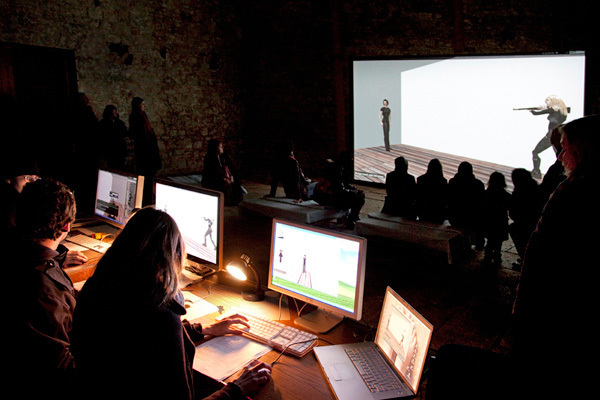
About 0100101110101101.ORG aka Eva & Franco Mattes (I)
The group 0100101110101101.ORG work dynamically with the Internet and use it actively as a performative space. They have worked with the Internet since 1996 and primarily create works based on copying, reproducing or re-mixing pre-existing cultural materials. Often their works are very hard to maintain permanently and some exist only as documentation.
By appropriating and combining existing works and cultural icons, 0100101110101101.ORG challenges the ideas of authorship and originality traditionally associated with the creation of art. They have for example directly copied other net artists’ works in Copies (1999) and fused several works together in Hybrids (1998). These works show how the cultural landscape, and in particular the Internet, are an open playing field for such activity.
In addition to their net art practice 0100101110101101.ORG also create physical sculptural works and interventions that use sampling as a method. In these works popular cultural icons such as Mickey Mouse and Nike are placed into new contexts; contexts which transform their iconic status into something new. Often, these contextual shifts have a critical intent. In 1995 the artist group began to steal small pieces from the works of noted artists at high-profile museums around the world, which is a good illustration of the group’s working method. These pilfered objects were first exhibited in 2011 under the title Stolen Pieces.
Eva & Franco Mattes have explored identity, and how society and the media perceive identity, throughout their practice. With the work Vaticano.org (1998) they became one of the first to create a fake website – a so-called spoof site – in the name of art. Vaticano.org is a manipulated copy of the Vatican’s official website which comments on the Catholic faith’s guidelines and methods, where one can, for example, confess one’s faith online.
Through Second Life and other online games, it has been possible for 0100101110101101.ORG to bring their exploration of identity into a new phase via the use of an avatar as a kind of alter ego in these synthetic worlds. In 1997 they began to work with Second Life as a performance space in the series Synthetic Performances and Re-enactments in Second Life (2007 – unfinished). In Re-enactments in Second Life they play famous historical performances out in Second Life, altering the physical encounter that traditionally takes place between performer and viewer. In Second Life people also act more freely than they might in the physical world.